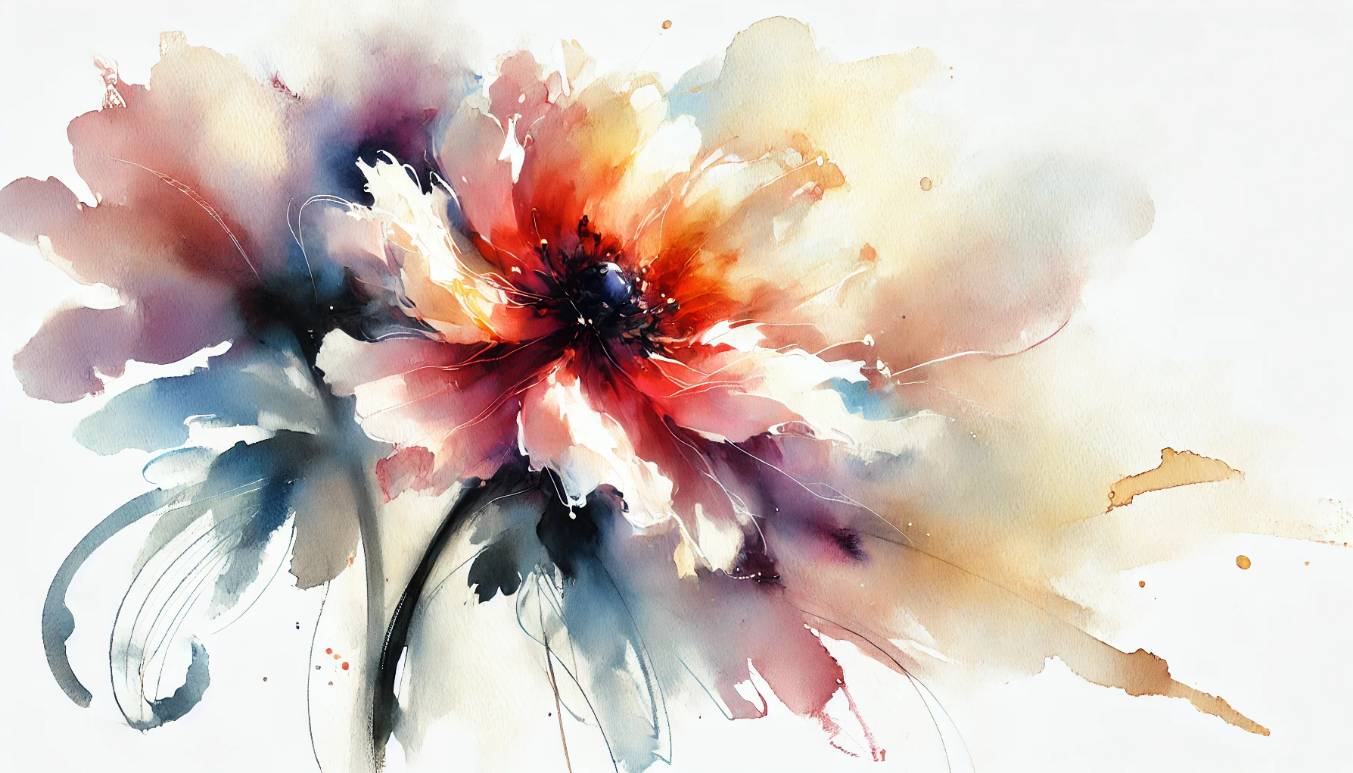Why Loose Watercolor Florals?
Watercolor painting thrives on flow, spontaneity, and vibrancy, and loose watercolor florals perfectly capture this essence. Unlike detailed botanical illustrations, this style embraces freedom and movement, allowing your creativity to flourish. Whether you’re a seasoned artist or just starting out, this modern approach will help you build confidence, loosen up your technique, and create stunning floral compositions with ease.
What Makes Loose Florals So Expressive?
The magic of loose florals lies in their simplicity and fluidity. Instead of obsessing over perfection, you capture the essence of flowers with bold strokes, soft blends, and unexpected color interactions. The unpredictable nature of watercolors mimics the organic beauty of nature, resulting in artwork that feels alive and dynamic.
Essential Materials for Loose Floral Painting
Best Brushes for Loose Florals
- Round Brushes (Size 6-12): Versatile for creating petal shapes, stems, and leaves.
- Mop Brushes: Perfect for large, flowing washes.
- Liner Brushes: Ideal for fine details and delicate stems.
Choosing the Right Paper & Paint
- Paper: Use 140 lb cold-pressed watercolor paper to handle wet-on-wet techniques without buckling.
- Paint: Professional-grade watercolors offer superior pigmentation and mixing potential. Brands like Daniel Smith, Winsor & Newton, and Schmincke are excellent choices.
Preparing for a Loose Watercolor Floral Painting
Picking Your Color Palette
Start with a limited palette of 3-5 colors to maintain harmony. Experiment with analogous colors (colors next to each other on the color wheel) for a soft look or complementary colors for bold contrast.
To Sketch or Not to Sketch?
Some artists prefer lightly sketching their floral composition, while others dive straight into painting. Try both approaches and see what works best for your style. No sketch? Even better! It forces you to trust your brushstrokes and embrace imperfection.
Techniques for Creating Loose Watercolor Florals
1. Wet-on-Wet for Soft Petals
- Apply clean water to the petal shape.
- Drop in watercolor and let it spread naturally.
- Tilt your paper to guide the paint flow for organic movement.
2. Bold Brushstrokes for Leaves & Stems
- Use quick, confident strokes for stems to add movement.
- Hold your brush loosely at the end for natural, gestural lines.
- Vary pressure—light strokes for delicate leaves, firmer strokes for bold foliage.
3. Layering for Depth
- First Layer: Soft, light washes to define basic shapes.
- Second Layer: Mid-tones to add dimension.
- Third Layer: Darker accents for contrast and focal points.
Creating Flow & Movement in Your Florals
1. Gesture Strokes for Dynamic Petals
Instead of overthinking each petal, use sweeping strokes to capture the natural sway of flowers. This technique prevents stiffness and brings energy to your composition.
2. The Power of Negative Space
Leaving some areas unpainted allows your florals to breathe. Negative space enhances composition, directs focus, and adds elegance to your work.
How to Keep Your Watercolor Florals Fresh & Expressive
1. Embrace Imperfection
Watercolor thrives on unpredictability. Let go of rigid expectations and enjoy the process! Every bloom has unique characteristics—so should your painting.
2. Finishing Touches
- Add a few loose splatters to enhance energy.
- Use a liner brush for subtle veins and accents.
- Contrast dark and light areas for visual interest.
Avoiding Common Mistakes
1. Overworking the Painting
Resist the urge to keep adding layers—watercolors dry lighter, so trust the process and step back before muddying the colors.
2. Muddy Colors
To keep colors fresh and vibrant:
- Let layers dry completely before adding more.
- Use a limited palette to avoid overmixing.
- Keep warm and cool colors separate unless intentionally blending them.
Case Study: A Beginner’s Journey into Loose Watercolor Florals
Emily, a self-taught artist, started her watercolor journey with overworked, tight floral paintings. After experimenting with bold brushstrokes, color mixing, and wet-on-wet techniques, she developed a free-flowing, expressive style. Now, she embraces happy accidents, creating dreamy floral compositions with confidence.
Final Thoughts: Finding Your Unique Style
1. Let Go of Control
The more you loosen up, the more expressive your florals become. Allow colors to bleed, merge, and flow freely for captivating effects.
2. Keep Practicing
The best way to master loose watercolor florals is through repetition. Experiment, learn from each piece, and refine your approach over time.
3. Enjoy the Process!
At its core, watercolor painting is about expressing emotion and creativity. Pick up your brush, embrace the unpredictability, and start painting florals that feel alive and effortless!





